Diplom 2017: "SEASONAL SEASCAPES Revitalizing productive commons through local action" by Vågard E. Nyaas
This project was awarded a distinction from the assessors for outstanding quality.
Tutors
Joakim Skajaa (APP) og Hedvig Skjerdingstad (DAV), Harald Røstvik (Sustainability)
Project description
Seasonal seascapes discuss how coastal communities in northern part of Norway can take actions when it comes to productivity, resource utilization, identity and self-determination. On a regional scale is the project based on the old system of commons outside of Lofoten – Vesterålen. Defining resource territories for the fishing villages which expands from the top of the mountain to the bottom of the sea. The fishing villages are connected with each other in a polycentric structure as autonomous places. Enabling each fishing village to take decisions based on own conditions while they are still linked to each other and can benefit on that. This gives the project a regional connection between land and ocean – places and shared commons.
On a local level is the project proposing a new building typology in a fishing village on the outer coast of Lofoten - Laukvik. The project is turning a surplus landscape of a landfill into a dynamic and productive community. Where the new building offers a shared roof for different type of activities linked to production, culture, innovation and recreation. The project is positioning itself as a smaller urban fishing community in the rural fishing village. Where it is constructed as a hybridization of existing houses and fish racks, with the ambition to give Laukvik a stronger coastal identity.
The building is divided in two parts vertically. In the landfill are fixed programs and spaces distributed, such as storages, technical rooms and toilets. While the ground floor has a dynamic organization where activities changes according to seasons and situations caused by nature.
Notes from the assessors
This project kept research and design beautifully integrated and in play throughout, forming a constantly reflective relevant investigation into the seasonal and long term properties of Lofoten, expressed with clarity in a four panels section-season-scenarios where the architectural framework acts as a canvas for life.
Research looks both ways, taking into account the deep past that has given this place meaning, and also anticipating a projected future that is shaped by warming sea temperatures, policies that restructure fish quotas and contested plans for oil development. While giving an architectural response to the heated discourses surrounding the above mentioned prospects, the proposal embraces a diverse and developing use of marine resources that includes production and art alongside the fishing industry and year round harvesting possibilities. Through analysing how the importance of different fishing villages has changed alongside with the development of fishing technology, he identifies the village Laukvik to hold a good position to take a leading role in the fisheries and to utilize more of the renewable marine resources.
All exhibition photos: Johan Bramberg
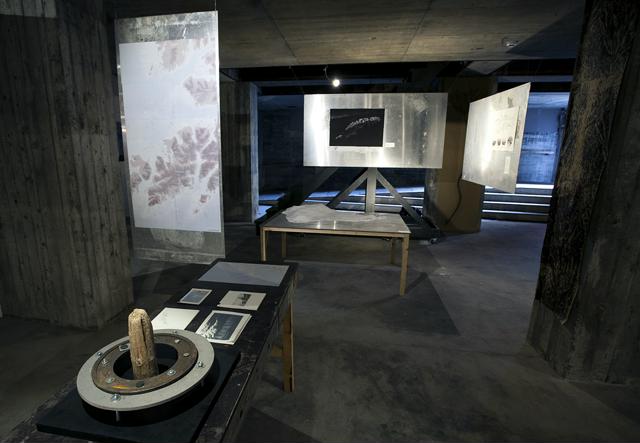
Exhibition photo, geographic context and the connection between fishing villages and the ocean.

Exhibition photo, relations between the ocean and human activity
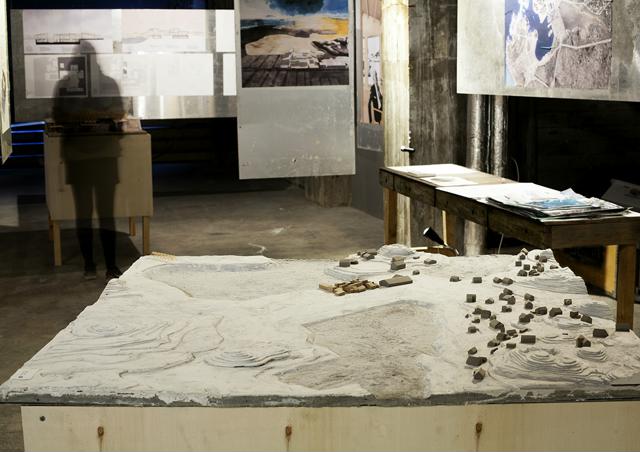
Exhibition photo, site model (1:500)

Exhibition photo, building model (1:100) and illustrations

Illustration, the building in relation to its place and the ocean
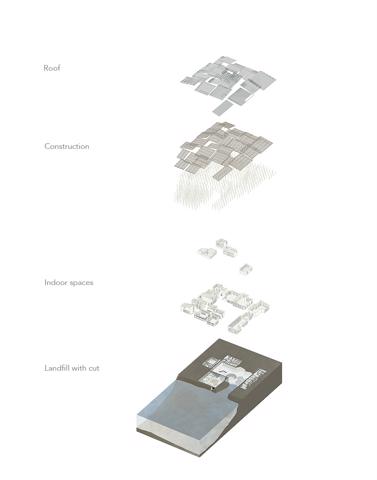
Exploded isometric of the different pats in the building
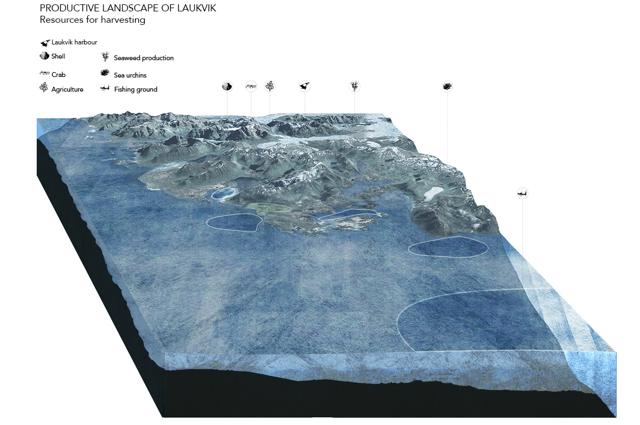
Illustration of the productive landscape in close proximity to the Laukvik harbour.
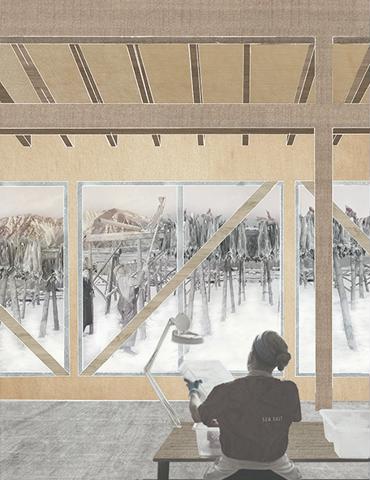
Illustration of new activity taking place in the building based on old tradition of drying cod on fish racks.
